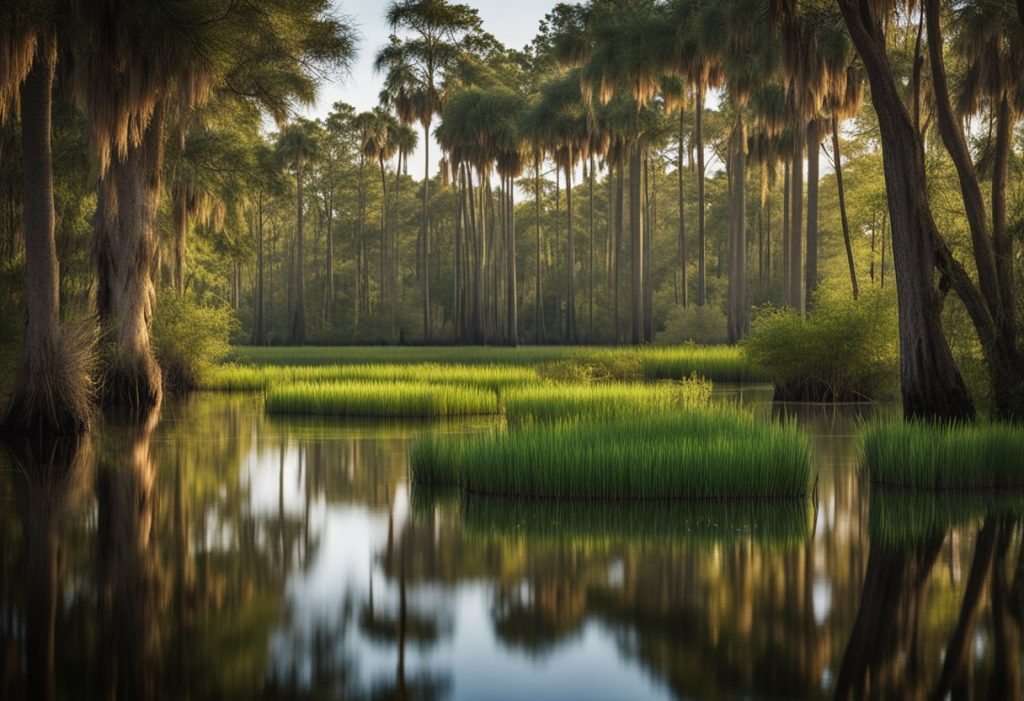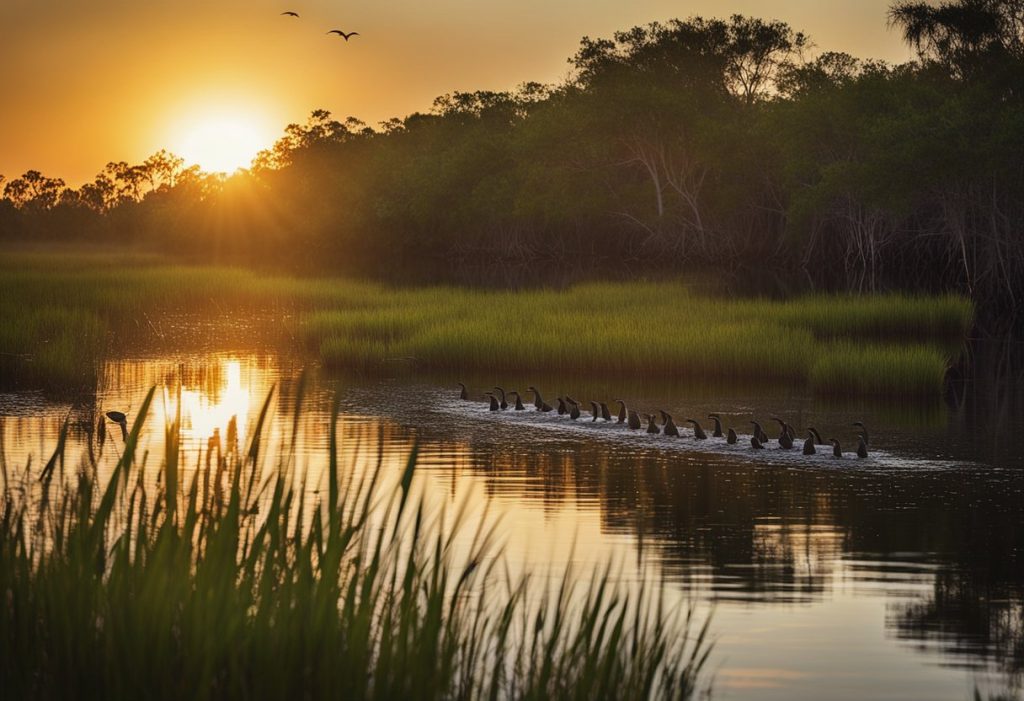Florida’s Everglades: Discovering a One-of-a-Kind Ecosystem
If you’re looking for a unique adventure in Florida, the Everglades should be at the top of your list. This vast wetland ecosystem is home to a diverse range of plant and animal species, many of which can’t be found anywhere else on earth. From alligators and panthers to mangroves and sawgrass, the Everglades offer a one-of-a-kind experience for nature lovers and outdoor enthusiasts alike.
One of the most fascinating things about the Everglades is its history. For centuries, this area was home to indigenous tribes who relied on the wetlands for food, shelter, and medicine. Later, European settlers arrived and began draining the swamps to make way for agriculture and development. Today, the Everglades face a number of environmental challenges, including habitat loss, pollution, and invasive species. Despite these threats, conservation efforts are underway to preserve this unique ecosystem for future generations.
Whether you’re interested in hiking, kayaking, or simply taking in the scenery, the Everglades offer something for everyone. With its rich history and diverse wildlife, this wetland wonderland is a must-see destination for anyone visiting Florida.
Florida’s Everglades: A Unique Ecosystem

Spanning over two million acres in central and southern Florida, the Everglades is a subtropical wetland ecosystem that is home to a variety of plant and animal species.
Geographical Overview
The Everglades is a vast area of wetlands, forests, and rivers that connect Lake Okeechobee with Florida Bay. The ecosystem is dominated by sawgrass marshes, which are often referred to as the “river of grass.” The Everglades is also home to mangroves, cypress swamps, and pine rocklands.
The Everglades is the largest subtropical wilderness in the United States, and it provides important habitat for numerous rare and endangered species like the manatee, American crocodile, and the elusive Florida panther. In fact, the Everglades is considered an international treasure and was designated as a World Heritage Site in 1979.
Climate and Weather
The Everglades has a subtropical climate, which means that it is warm and humid throughout the year. The wet season runs from May to November, and during this time, the area receives an average of 60 inches of rain. The dry season runs from December to April, and during this time, the area is much drier, and the water levels are lower.
If you’re planning a trip to the Everglades, it’s important to keep in mind that the weather can be unpredictable, and it’s not uncommon to experience sudden rain showers or thunderstorms. It’s also important to dress appropriately for the weather and wear comfortable shoes that can handle wet and muddy terrain.
Flora and Fauna

Here are some of the unique plant species and wildlife that you can discover during your adventure.
Unique Plant Species
The Everglades is home to over 1,000 species of plants, including unique species such as the Ghost Orchid and the Saw Palmetto. The Ghost Orchid is a rare plant that is well worth taking the trip to see. It is a delicate and beautiful flower that is only found in the Everglades. The Saw Palmetto is another unique plant species that is found in the Everglades. It is a small palm tree that grows in clumps and has a unique fan-like shape.
Wildlife
The Everglades is home to a diverse range of wildlife, including alligators, panthers, and manatees. Alligators are one of the most iconic animals in the Everglades. They are a common sight and can be seen basking in the sun or swimming in the water. Panthers are another unique animal that can be found in the Everglades. They are a rare and endangered species that are only found in Florida. Manatees are also a common sight in the Everglades. They are large, gentle creatures that can be seen swimming in the water.
During your visit to the Everglades, you may also encounter other species such as snakes, turtles, and birds. The Everglades is a haven for birdwatchers, with over 350 species of birds found in the park. Keep an eye out for the White Ibis, Great Blue Heron, and the Roseate Spoonbill.
Threats and Conservation Efforts

Environmental Threats
The Everglades ecosystem is facing several environmental threats that are putting its survival at risk. The region’s water supply has been impacted by human activities such as drainage and canal building, which have disrupted the natural flow of water. This has led to a decrease in water levels, affecting the availability of water for the ecosystem’s plants and animals. Additionally, exotic plants and animals introduced by humans have altered the natural balance of the ecosystem, causing further damage.
Conservation Measures
Efforts to conserve the Everglades ecosystem are underway at the federal, state, county, and local levels. The National Park Service has implemented several measures to combat nutrient-rich water, interrupted hydrology, decreased water supply, exotic plants, and mercury contamination. The agency is working with other organizations to restore the natural flow of water and remove invasive species.
The Nature Conservancy is also working to protect the Everglades by addressing the consequences of years of ditching and diking, as well as the impacts of climate change, including sea-level rise, reduced precipitation, and higher temperatures. The organization is working with local communities to raise awareness about the importance of conservation and to develop sustainable practices that will help protect the ecosystem.
In addition, the Everglades Foundation is working to address the threats to the ecosystem by advocating for policies that support restoration efforts. The organization is working with policymakers at the state and federal levels to secure funding for restoration projects and to develop policies that will help protect the ecosystem.
Adventure in the Everglades

Here are some of the most popular tourist activities in the Everglades and the best time to visit.
Popular Tourist Activities
There are many exciting activities that you can enjoy while exploring the Everglades. Here are some of the most popular tourist activities:
Airboat Tours: One of the most popular ways to explore the Everglades is by taking an airboat tour. These tours will take you through the marshes and swamps of the Everglades, allowing you to see wildlife such as alligators, birds, and turtles up close.
Kayaking and Canoeing: Another popular activity in the Everglades is kayaking and canoeing. These activities are perfect for those who want to explore the waterways of the Everglades at their own pace. You can rent a kayak or canoe and explore the shallow waters of the Everglades.
Hiking and Biking: If you prefer to explore the Everglades on land, then hiking and biking are great options. There are many trails throughout the Everglades that will take you through the forests and wetlands of this unique ecosystem.
Wildlife Watching: The Everglades is home to a wide variety of wildlife, including alligators, panthers, and manatees. Wildlife watching is a popular activity in the Everglades, and there are many opportunities to see these animals in their natural habitat.
One thing to note is regarding traveling with a dog to the Everglades park. There are a few rules you should know before making your plans. Unless it is a service dog, they will not be allowed on the trails and you should find a good place for them to stay will you explore.
Best Time to Visit
The best time to visit the Everglades is during the dry season, which runs from November to April. During this time, the weather is mild, and there is less chance of rain. This makes it the perfect time to explore the Everglades on foot, by bike, or by kayak.
If you are interested in wildlife watching, then the best time to visit the Everglades is during the winter months. This is when many of the migratory birds and other animals are in the area. However, it is important to note that the winter months are also the busiest time of year in the Everglades, so you may need to book your activities in advance.

I am a father of a 2 energetic boys. If one of them accidently sleeps past 6am, the other one make sure he will wake up. Traveling is our favorite activity as a family and we try to do it almost every time school is out. Our favorite location is Florida (coming from Baltimore the warm weather is usually a blessing).

